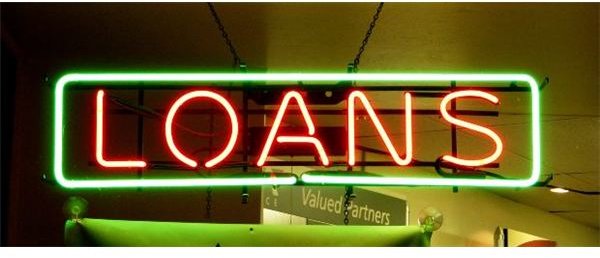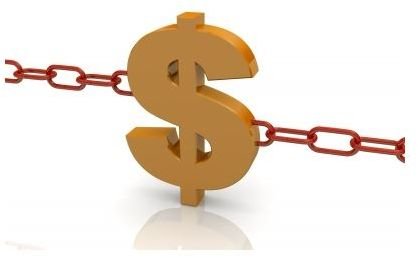How to Get Car Loans With a High Debt to Income Ratio
What Does It Mean?
Before I discuss car loans with high debt to income ratios—and if it’s possible to even get a loan, what is debt to income ratio?
Your debt to income ratio is measured by taking all your monthly debts plus your rent or mortgage and dividing that number by your gross (not net) monthly income. For example:
- Monthly Debt & Housing - $1,200
- Total Gross Income - $3,500
- $1,200 / $3,500 = 0.342857 or a debt to income ratio of 34%
To calculate this accurately, make sure you include all your monthly debt including credit cards, car loans, other loans or anything you pay on a monthly basis that was purchased on credit. This doesn’t include items like utilities, telephone, cable, etc.
Credit Score

You can have a pretty decent credit score (700+) and still have a high debt to income ratio—simply because you’ve purchased many things on credit or have a lot of credit cards. On the other hand, you can also have a poor credit score (500 or under) and a low debt to income ratio—most likely because you have no credit obligations or no credit history.
Car Buying Tips offers that a good debt to income ratio should be no more than 36%, so if you use my calculation above and discover your debt to income ratio is say 45%, chances are you may have a hard time obtaining a car loan—but it’s not impossible.
Car Loan Scenarios

If you know your debt to earnings ratio is high, say 45%, that’s nearly half of your gross income and car finance companies, banks and credit unions are wary that if they loan you money for a car, you won’t be able to meet the monthly obligation—and car finance companies really don’t want to get into the car repossession game—they lose money that way.
Car loans with high debt to income ratios are not impossible and below are a few scenarios where you may be able to get the vehicle you want. Keep in mind that any person or family that has a debt to income ratio over 50%, will probably be denied a car loan—no matter where they go—unless they try a buy here, pay here car lot.

Let’s stick with a debt to income ratio of 45% and say you have an average credit score of 650—try following these car financing and loan tips:
- What Can You Afford? – Visit the consumer car research website, Edmunds and use their How Much Car Can I Afford calculator. This allows you to enter a monthly payment you think you can live with and shows you what price range of car you should look for. For example, I put in a $300 monthly car payment and the Edmunds calculator told me to look in the $12,000 to $15,000 price range. Don’t try to buy a car that is higher than $15,000—you won’t be able to afford it with your high debt to income ratio.
- Shop for Loans – Once you’ve found a car in your price range, it’s time to shop for loans. Try the car dealership, your bank, and credit unions to see if you can obtain a car loan with a high debt to earnings income ratio of 45%. Some of these car finance places will immediately say no—the first will probably be your bank. If you join or belong to a credit union, they may say yes if you agree to bank with them and keep a savings account with a minimum amount in it all the time. Almost every car dealership will have “secondary finance” sources or companies that do offer loans to those with a high debt to earnings ratio—but you’ll pay dearly for that car loan with a high interest rate.
- The Deal – First off, unless you are related to someone high up that works at your bank, you will be turned down with a 45% debt to income ratio—it’s too high for a bank to take the risk. You may be able to go the credit union route, but expect a hefty interest rate between 11-19% and they will want that monthly payment each month electronically—right from that savings account you must maintain. A car dealership, with access to secondary finance sources will most likely be able to get you a car loan with a high debt to income ratio—but that interest rate will be even higher—expect a rate between 19-25%!
Don’t Fall for Scams

It’s really up to you to figure out if you can afford the monthly payment you’re being offered along with that high interest rate—so look at your income and expenses by using a good personal budget first. Before you consider a car loan, be honest with yourself—do you really need a car loan right now, or can you work on building a better credit score, paying off some debt and lowering your debt to earnings ratio first?
If you do decide you must have that car and have a high debt to income ratio, then here are some things to watch out for:
- Extras – Even though I’m a car dealer, I know my finance manager loves those secondary financing sources because they often allow us to tack on extras like GAP Insurance, window tint, and even an extended warranty—whether you want it or not. Some finance managers will even tell you that the secondary financing source insists you have these things or you can’t get the loan. Walk away from these offers. Not only will they increase your monthly car payment—that statement is totally untrue—no one can force you to buy extras—not even a secondary financing source.
- Buy Here, Pay Here – Skip these if you can—they are perhaps the worst place to get a car loan and at these types of car lots—expect an interest rate as high as 29%. If you miss even one payment, your car will be repossessed and no matter how much cash you come up with (or what sob story you tell them), they won’t give you the car back and will just keep re-selling it to the next sucker.
- Negotiate the Interest Rate - Finally, if you do obtain a car loan with high debt to income ratio, ask the finance manager to let you see what is called the loan call sheet. This is either faxed or emailed to the finance manager. On that loan call sheet you will see a “buy rate” and a “sell rate.” You want the “buy rate,” which is always lower. The sell rate is a percentage the finance manager can mark up the interest rate. For example, you could have a buy rate of 10% and a sell rate of 13% and if you accept the sell rate, the dealership will be making money off of your car loan. If they won’t show you the loan call sheet, find a dealership that will. Chances are if you tell them you’re leaving, they’ll give you the “buy rate.”
It’s not impossible to find car loans with high debt to income ratio—but before you sign on the dotted line, make sure you can really afford the monthly payment. Better yet, sleep on the offer and look at your budget closer—the deal will still be there the next day.
References
- Oskie - Debt to Income Ratio retrieved at - https://www.aboutus.org/Oskie.com
- Car Buying Tips retrieved at - https://www.carbuyingtips.com/bad-credit-auto-loans.htm
Image Credits:
- Debt - (FreeDigitalPhotos)
- Visa Card (MorgueFile)
- Loans - (MorgueFile)
- 2011 Ford Fiesta courtesy Jean Scheid
- Future (FreeDigitalPhotos)
